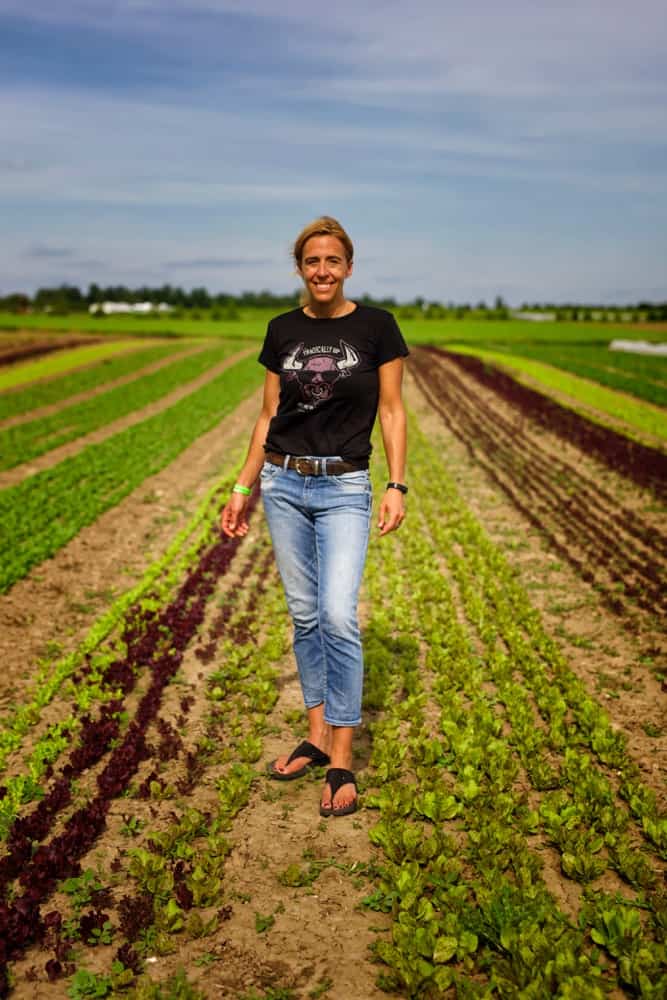Looking to create a better life for their young children, Gillian Flies and her partner left their stressful, busy lives in the city and bought a farm. The New Farm is a certified organic family farm located on the crest of the Niagara Escarpment just west of the village of Creemore. They produce premium quality organic vegetables for restaurants, retail stores and wholesale customers.
Flies is a strong proponent of Regenerative Agriculture, a movement towards redistributing carbon from the atmosphere to the soil. This can be done through farming practices (like staying clear of pesticides, planting diverse crops, and never leaving the soil empty) that help to keep the soil’s organic matter healthy and thriving.
We chatted with her this week.
The most gratifying part of my job is knowing that we are farming in a way that provides people access to nutrient-dense, healthy food while at the same time doing our part to restore the environment and doing everything we can to help educate farmers and consumers on how their food choices can have a positive impact on the environment, climate change and their health.
The most challenging part of my job is that farming is hard. Each year now we are being thrown curve balls around the weather. Late, cold wet springs, wild hail storms, heat waves and drought are now something that we have to learn to grow food around.
Sustainable farming means that you are able to farm in a way that dies not continue to degrade your soil and the environment. However, maintaining the status qui is not sufficient when our soil and environment are broken. Regenerative agriculture is about rebuilding the life and health of our soil, environment and communities. Regenerative agriculture also has a huge capacity for sequestering carbon and mitigating climate change.
There are five main principals to regenerative agriculture and we are implementing all of them. We have realized that building and protecting the life in the soil is what it is all about. It draws down and stored carbon in the soil, holds way more water, absorbs water quicker during heavy storms and produces way healthier food. So how do we do this?
6. Regenerative agriculture doesn’t just mean rebuilding your soil it also means rebuilding your community. We have many events and fundraisers that bring our community to our farm, together we have raised over a million dollars to put organic food into good food organizations (insert video link?) and we have a profit sharing model with our employees.
5. As you mentioned in your TED Talk, data suggests that there are less than 60 harvests left, which is terrifying AF. What changes can we start making right now to reverse this?
If consumers demand regeneratively grown food farmers will grow it! The biggest impact you can have is to buy food that is grown in a way that enhances the environment. Right now in Canada the best way to do that is to buy organic, many of the regenerative practices are already required in our standards. Shop at the farmers market. Know your farmer and ask if they are sequestering carbon – they will know what you are talking about. Pay more for your food. This idea that food is suppose to be cheap is ridiculous. It externalizes all the true cost of production to the environment and our health. If people continue to demand cheap food, farmers will continue to wreak havoc on the environment to provide it for you.
What if we wanted to do more? What if we had a little bit of extra time or dollars to contribute to the cause – how else could we get involved and impact change on a larger scale without starting our very own regenerative farms?



 Follow Us On Instagram
Follow Us On Instagram
